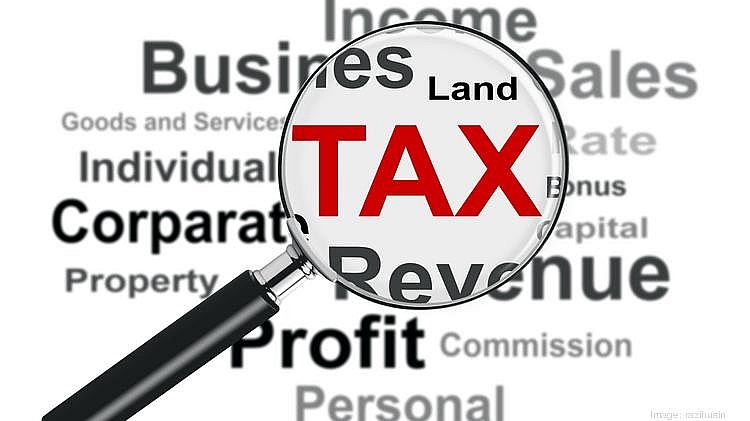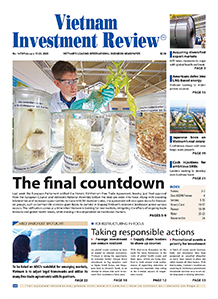Optimising benefits from tax incentives
 |
| Restriction in applying tax incentives by enterprises and how to optimise benefits from tax incentives |
Tax incentives are applied in the form of preferential duration of corporate income tax (CIT) exemption (tax holiday), CIT reduction, preferential CIT rates, exemption or reduction of import tax on goods imported as fixed assets, raw materials, supplies, and parts used for the project, and exemption or reduction of land rental and land use tax, among others.
The Investment Law regulates investment incentives and tax laws regulate CIT incentives. To be entitled to tax incentives, the enterprises and the projects need to meet the conditions stipulated in both laws. However, it could be very damaging if the investor incorrectly determined the incentives applying to their business.
Conditions to apply CIT incentives
Upon satisfying the criteria of location and/or sectors and/or scales to be entitled to CIT incentives, during the incentive enjoyment period, enterprises have to comply with the following regulations under current tax laws in order to apply CIT incentives properly.
CIT incentives are applied to enterprises that properly follow the regime of accounting and invoicing, and fulfilment of tax obligations according to their declarations.
Enterprises must separate incomes generated by the activities eligible for tax incentives from incomes generated by activities not eligible for tax incentives. In the event the incomes cannot be separated, the incomes from activities entitled to tax incentives will be determined based on the ratio of revenue generated by activities eligible for tax incentives to total revenue of the enterprise.
Tax incentives are not applied to:
- Incomes from transfer of capital, transfer of right to contribute capital; incomes from transfer of real estates, except for social houses; incomes from transfer of investment projects, transfer of right to participate in investment projects, transfer of right to explore and exploit minerals; incomes from overseas business activities;
- Incomes from the exploration and exploitation of petroleum and other precious rare natural resources, and incomes from mineral exploitation;
- Incomes from services subject to special sales tax;
- Other cases decided by the government.
If an enterprise is eligible for multiple tax incentives applied to the same income at the same time, it may choose the most advantageous incentive.
Additionally, it is crucial to note that CIT incentives given for new investment projects are not applied to enterprises established by splitting, separation, merger or transformation of enterprises, change of ownership, and other cases according to law.
Inconsistent regulations on tax incentives between different competent authorities
The (i) differences in regulations promulgated by different laws, issued by different levels of authorities and (ii) different points in time of issuing and applying the guidelines (e.g. different effective dates of different laws and regulations), can confuse investors in determining the correct tax incentives in specific periods and can even trigger potential risks if they incorrectly determine tax incentives applied to their businesses.
1. Inconsistent regulations on assurance of business investment upon changes of laws by different competent authorities:
- The Investment Law issued by the National Assembly, effective from July 1, 2015;
- Decree No.118/2015/ND-CP issued by the government, effective from December 27, 2015; and
- Circular No.83/2016/TT-BTC issued by the Ministry of Finance, effective from August 1, 2016.
The Investment Law issued by the National Assembly (effective from July 1, 2015) and Decree No.118/2015/ND-CP issued by the government (effective from December 27, 2015) both had regulations on assurance of business investment upon changes of laws.
In particular, for projects granted an investment certificate before July 1, 2015 enjoying tax incentives under the regulations effective before July 1, 2015, where a new law comes into effect providing more or less favourable investment incentives than those currently enjoyed by the investors, the investors have the right to choose the best incentives to apply for the remaining incentive enjoyment period of the projects.
Meanwhile, Circular No.83/2016/TT-BTC issued by the Ministry of Finance (MoF) on June 17, 2016 outlines a different incentive regime from the above regulations. Specifically, determination of incentives applied to investment projects granted investment certificates before July 1, 2015 will still be based on tax incentive policies (CIT, import tax or non-agricultural land use tax) in accordance with regulations issued before July 1, 2015 and still in effect. This means that if the incentives according to new laws bring more benefits, the investors cannot apply the best ones for the remaining period of their project.
It took two years until the MoF issued Circular No.81/2018/TT-BTC on August 28, 2018 amending Circular No.83/2016/TT-BTC by adding the regulation on assurance of business investment upon changes of laws in order to ensure the regime of more favourable incentives during the remaining incentive enjoyment period for the projects licensed before July 1, 2015.
This supplemental regulation of Circular No.81/2018/TT-BTC is to solve the conflicts between Decree No.118/2015/ND-CP and Circular No.83/2016/TT-BTC as mentioned above.
2. Inconsistency in determining encouraged business lines and sectors eligible for CIT incentives by different competent authorities:
The Investment Law and Decree No.118/2015/ND-CP mentioned incentives applying to encouraged business lines whereas the Tax Law and Decree No.218/2013/ND-CP mentioned incentives applied to the encouraged sectors.
For further details, some business lines included in the list of business lines entitled to investment incentives under the Investment Law and Decree No.118/2015/ND-CP are not entitled to CIT incentives in reality, as they are not included in encouraged sectors entitled to tax incentives under the Tax Law and its relevant Decree No.218/2013/ND-CP, e.g. rescue services at sea; production of petrochemical products, pharmaceutical-chemical products, technical plastic – rubber components; ship-building; production of materials to replace asbestos; investment in operation of exhibition centres, logistics centres, warehouses, supermarkets, shopping malls.
3. Inconsistency in determining encouraged locations to be entitled to CIT incentives by different competent authorities:
The Investment Law and its relevant Decree No.118/2015/ND-CP provided a list of locations eligible for investment incentives, including all industrial parks and export-processing zones established under government regulations (regarded as difficult socioeconomic areas).
Meanwhile, the Law on CIT and its relevant Decree No.218/2013/ND-CP on CIT incentives provided a list of locations entitled to CIT incentives, including provinces and towns regarded as difficult socioeconomic areas.
Accordingly, the industrial parks and export-processing zones mentioned in the list attached to the Investment Law and Decree 218 but not located in provinces and towns regarded as difficult socioeconomic areas according to the tax laws and tax regulations are not entitled to CIT incentives.
4. Inconsistency in defining new projects and business expansion projects to be entitled to CIT incentives by different competent authorities:
According to the Investment Law, when a project was granted an investment registration certificate (IRC), the investment incentives, legal bases, and conditions for investment incentives must be indicated on the IRC.
However, the policies on the investment incentives of the government prior to 2014 have different regulations between the Investment Law and Tax Law. To be specific, investment regulations encouraged investment activities through new projects, whilst CIT regulations distinguished between tax incentives applied to newly-established enterprises from new projects and tax incentives applied to new projects considered as a kind of investment expansion. Additionally, CIT incentives given to business expansion projects had been invalid during 2009-2013 under tax regulations.
The above inconsistency results in difficulty and potential risks for enterprises in applying correct tax incentives to their businesses. Suntory PepsiCo Vietnam Beverage Company (PepsiCo) as mentioned in Official Letter No.5311/BTC-TCT dated April 22, 2015 issued by the MoF to the Ministry of Planning and Investment (MPI) had been subject to tax exposures when the different regulations between the Investment Law and the Law on CIT lead to different CIT incentives applied to the company determined by different competent authorities, including the MoF and the MPI.
Particularly, CIT incentives determined by the MoF are less favourable for the company compared to the incentives determined by the MPI as follows:
- According to the investment certificate of PepsiCo’s Branch issued by Can Tho Export Processing and Industrial Zones Management Authority (Can Tho EPIZA) in 2008, PepsiCo’s Branch was entitled to CIT incentives as a new investment project (CIT rate of 15 per cent for 12 years from launch, CIT exemption for next 3 years, and 50 per cent CIT reduction in the next 7 years).
- However, in 2012, per the result of a tax audit by the General Department of Taxation (GDT), PepsiCo’s Branch was not entitled to this CIT incentive as a new project, and was given different CIT incentives instead, on additional income earned from investment expansion as a business expansion project (e.g. CIT exemption in 3 years and 50 per cent CIT reduction in the next 5 years).
PepsiCo issued an official explanation to clarify that the company applied CIT incentives in compliance with its investment certificate granted by the Can Tho EPIZA. The Can Tho People’s Committee also sent an official letter to the MoF and the MPI to request these authorities to consider the case of PepsiCo and authorise PepsiCo to enjoy the tax incentives indicated on its investment certificate issued in 2008.
However, on May 9, 2017, the MoF issued Official Letter No.5972 stating the final decision on the case of PepsiCo. Accordingly, the MoF re-affirmed that PepsiCo is only entitled to tax incentives as a business expansion project and therefore has to fulfil tax claw-back, penalties, and interests with the total amount of roughly VND21.5 billion ($0.94 million).
5. When the Tax Law changes, there will be accompanying changes in regulations on tax incentives that might make enterprises confused about adjusting the incentives applied to their business properly and timely whilst their IRC is still in effect. Additionally, the irregular updating of tax knowledge and regulations might cause enterprises to apply incorrect/outdated tax incentives.
Risks in incorrect determination of CIT incentives
CIT incentives bring benefits to enterprises by reducing costs and leaving capital for development. However, by the incorrect determination of incentives due to a lack of tax knowledge or failure in applying the changes in incentives in time as new tax laws come into effect due to irregular updating of new tax regulations, the enterprises may bear the following risks:
- Overpayment of tax: when the enterprise is simultaneously entitled to many levels of incentives by meeting conditions of locations and business lines and the enterprise applies less favourable incentive than the best one due to incorrect understanding of regulations on incentives, then the enterprise will pay more tax than its liabilities.
- Underpayment of tax: when the enterprise applies CIT incentive with higher levels than the one it is entitled to, then it will under-declare its tax liabilities and underpay tax. As a result, the enterprise triggers the risk of tax clawback, penalties, and interests on late payment.
Planning points
In conclusion, the incentives issued by competent authorities benefit not only the enterprises, but also the government and society as a whole by attracting more inbound investment, creating jobs for the country’s workforce, and increasing the state budget.
Thus, in order to optimise benefits from incentives and mitigate risks from applying incorrect incentives, enterprises should be proactive in updating their knowledge of tax regulations frequently. Additionally, it is not only the effort from enterprises, but also from the government and competent authorities in issuing regulations with consistent guidance and time of validity for the enterprises to comply with.
What the stars mean:
★ Poor ★ ★ Promising ★★★ Good ★★★★ Very good ★★★★★ Exceptional
Related Contents
Latest News
More News
- Potential in reach to become decade’s stand-out performer (February 03, 2021 | 13:54)
- Coronavirus outbreak: impacts on Vietnamese tourism industry (February 11, 2020 | 17:55)
- Grant Thornton bi-annual tax seminar in Ho Chi Minh City (April 02, 2019 | 09:34)
- What to know before attracting investments from private equity firms (March 15, 2019 | 08:00)
- Foreigners earning incomes from providing services in Vietnam, what are their tax liabilities? (February 20, 2019 | 08:19)
- How to maximise value added tax refunds (January 21, 2019 | 08:53)
- “Substance over form” in transfer pricing – facts and risks (November 26, 2018 | 08:37)
- Employee shares ownership plan and tax implications in Vietnam (October 30, 2018 | 09:11)
- Having a permanent establishment in Vietnam could cost a pretty penny (September 21, 2018 | 08:00)
- Tax implications on Vietnam’s bond market (August 31, 2018 | 08:00)

 Tag:
Tag:



























 Mobile Version
Mobile Version